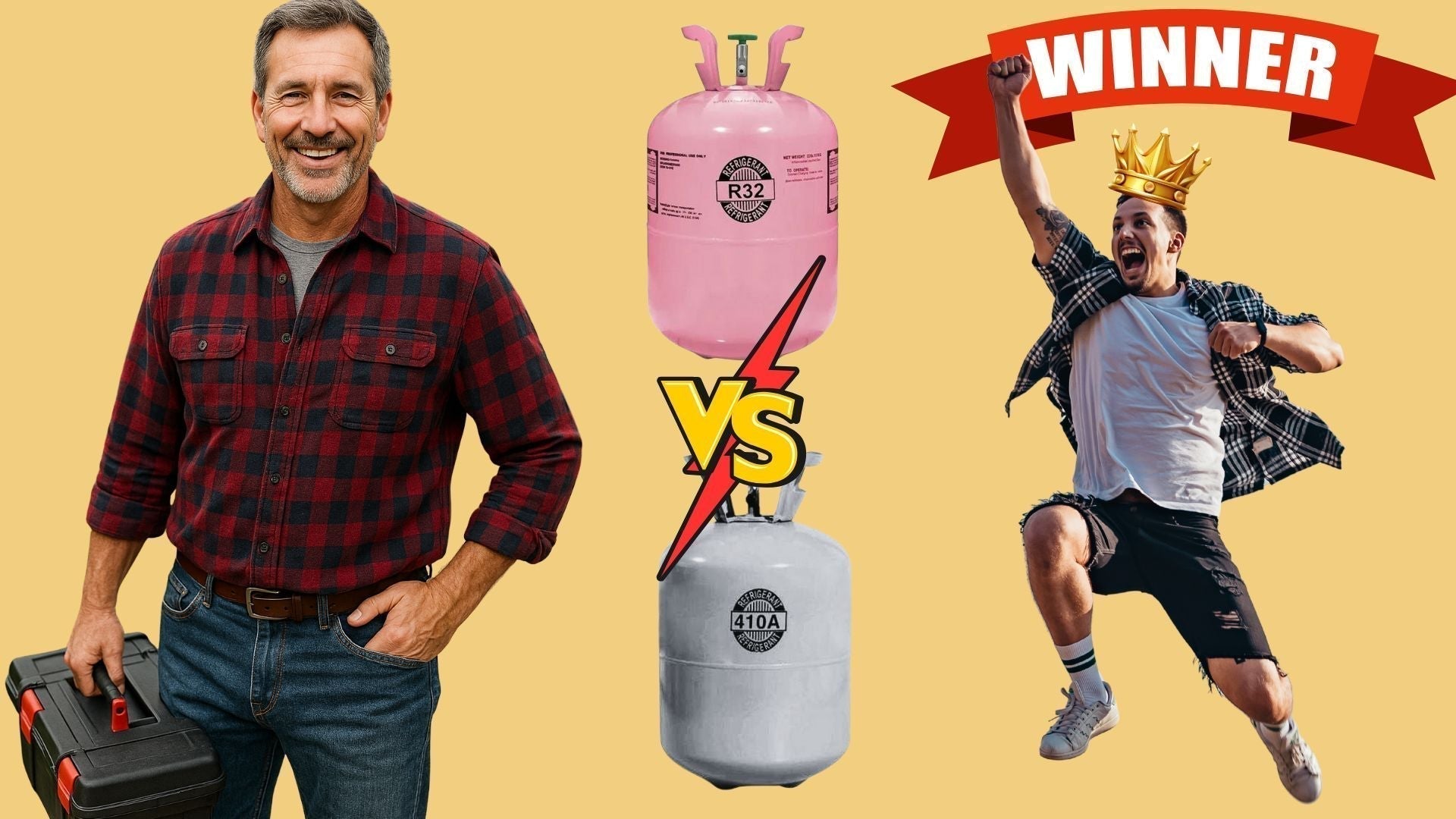By Mike Sanders - Your HVAC-Savvy Neighbor
Let’s cut through the noise: if you’re upgrading your HVAC system and still hearing about R-410A like it’s the gold standard, you’re a little behind the times. Don’t worry—you’re not alone. But here’s the deal: R-32 is quickly becoming the go-to choice for savvy homeowners who care about efficiency, safety, and long-term value.
What Is R-32, and Why Should You Care?
R-32 (difluoromethane) is a next-gen refrigerant classified as A2L—which means it’s mildly flammable but generally safe when used properly. It’s got a Global Warming Potential (GWP) of 675, which makes it a whole lot friendlier to the planet than R-410A’s whopping 2,088.
And here’s where things get interesting: even though it’s been used in Asia and Europe for years, it’s just now becoming mainstream in U.S. residential systems thanks to improved codes, tools, and training.
How Does R-410A Compare?
R-410A was the standard for a long time after R-22 was phased out. It’s non-flammable (A1), sure, but that’s about where the benefits stop. It’s less efficient, more expensive, and way worse for the environment.
Most importantly, it’s on its way out. The AIM Act has it getting phased down starting in 2025, and new installations will get tougher—and pricier.
🔧 Want to see an R-32 system worth looking at? Check out this 3 Ton 15.2 SEER2 R-32 AC and Gas Furnace System.
Efficiency Showdown: R-32 vs. R-410A
-
R-32 is more efficient. Period. It can transfer heat better, so your unit doesn’t have to work as hard.
-
That means lower energy bills, fewer emissions, and better SEER2 ratings.
-
It also requires less refrigerant by volume than R-410A, so your system can be lighter and more compact.
According to Daikin, one of the early R-32 adopters, switching can mean up to 10% higher efficiency. That adds up fast.
What About Safety?
Both refrigerants are safe when installed and maintained properly, but:
-
R-410A is non-flammable (which sounds good but comes with trade-offs).
-
R-32 is mildly flammable, but modern systems are built with safety controls that meet all new UL and EPA codes.
I tell folks: if you can handle a gas grill or a propane torch, you can handle an R-32 system. Just use a licensed installer and follow local code.
Cost Comparison
Let’s talk dollars.
-
R-32 units are generally cheaper to charge, since you use less of it.
-
R-410A costs are already going up thanks to the refrigerant phase-down.
-
Long term, service and parts for R-410A will likely be more expensive.
If you’re a budget-conscious homeowner (like me), that math is pretty easy.
What the Experts Say
Still not convinced? Take a look at what other reputable folks are saying:
-
Carrier says R-32 systems offer lower costs and higher performance for future-ready homes.
-
Daikin led the R-32 charge globally, citing better performance and sustainability.
-
Trane Technologies supports the switch to low-GWP refrigerants like R-32.
-
Even consumer-facing sites like Build With Ferguson highlight R-32’s advantages for eco-conscious homeowners.
Final Verdict: R-32 Is the Better Bet
Unless you’re buying an ultra-specialized system or live in a region that hasn’t updated its codes, R-32 should be at the top of your list.
You’ll get:
-
Better energy efficiency
-
Lower emissions
-
More affordable operating costs
-
Future-ready compliance with EPA regulations
So when you’re browsing systems, skip the R-410A dinosaurs. Go with a modern, smart setup like one of these R-32 AC and Gas Furnace bundles. Your wallet—and the planet—will thank you.
My Next article is on: R-32 in Cold Climates? Here’s What I’ve Learned Living With It
Stay cool,
Mike







